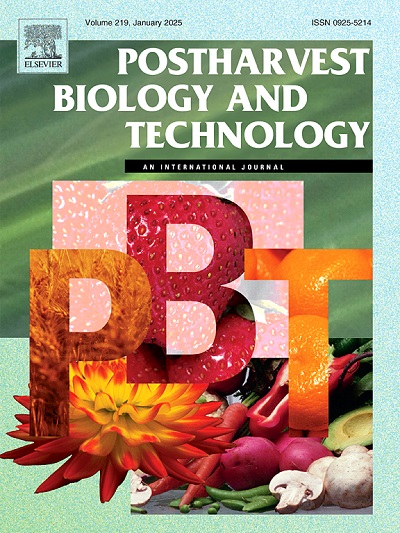Exudates secreted: Penicillium expansum's means of conquering the external environment
IF 6.4
1区 农林科学
Q1 AGRONOMY
引用次数: 0
Abstract
Penicillium expansum, the causal agent of apple blue rot, produces patulin, a well-known mycotoxin regulated in many countries. When grown on various synthetic media, P. expansum secretes exudates. The release of the latter has been previously described in fungi and contribute to their virulence by secreting toxic specialized metabolites (SMs) into the external environment. Exudates are no longer produced in a mutant deleted for PatL, a transcription factor essential for patulin biosynthesis, suggesting a link between patulin and exudate production. In this context, the content of exudates produced by P. expansum was characterized by metabolomics and proteomics. These analyses revealed 20 SMs such as patulin and citrinin, and 194 proteins in the secretome, mainly involved in carbohydrate metabolism to degrade the plant wall, and to build or modify the fungal wall. Four of the secreted proteins (PatE, PatB, PatO, PatF) are involved in patulin biosynthesis, especially PatE, the last enzyme in the patulin biosynthetic pathway. The fact that its substrate, ascladiol, was also present suggests that the final step of patulin secretion may occur outside the fungus. In parallel, a comparative transcriptomic study of wild-type and null mutant ΔpatL strains unveiled that PatL negatively or positively regulated the expression of 294 genes. Among them, 21 genes encode proteins present in exudates, i.e. 11 % of the exudates, including four proteins involved in patulin biosynthesis, but also enzymes involved in starch degradation. Our results suggest a broader role for PatL than the sole regulation of patulin biosynthesis.
渗出分泌物:扩张青霉征服外界环境的手段
苹果蓝腐病的病原——扩张青霉会产生曲霉素,曲霉素是一种在许多国家都受到管制的知名霉菌毒素。当在不同的合成培养基上生长时,膨体草分泌渗出物。后者的释放先前已在真菌中被描述,并通过将有毒的特殊代谢物(SMs)分泌到外部环境中来促进其毒力。PatL是展霉素生物合成所必需的转录因子,在一个缺失的突变体中不再产生渗出物,这表明展霉素和渗出物的产生之间存在联系。在此背景下,利用代谢组学和蛋白质组学对膨化芽胞液的含量进行了表征。这些分析揭示了20个短链蛋白,如展霉素和柑桔霉素,以及194个分泌组蛋白,主要参与碳水化合物代谢,降解植物壁,建立或修饰真菌壁。四种分泌蛋白(PatE、pathb、PatO、PatF)参与展霉素的生物合成,尤其是展霉素生物合成途径的最后一种酶PatE。事实上,它的底物阿斯屈二醇也存在,这表明展霉素分泌的最后一步可能发生在真菌外。与此同时,对野生型和零突变ΔpatL菌株的转录组学比较研究发现,PatL负或正调控294个基因的表达。其中,有21个基因编码渗出液中存在的蛋白质,占渗出液的11. %,包括4个参与展霉素生物合成的蛋白质,以及参与淀粉降解的酶。我们的研究结果表明,PatL具有比单调控展霉素生物合成更广泛的作用。
本文章由计算机程序翻译,如有差异,请以英文原文为准。
求助全文
约1分钟内获得全文
求助全文
来源期刊

Postharvest Biology and Technology
农林科学-农艺学
CiteScore
12.00
自引率
11.40%
发文量
309
审稿时长
38 days
期刊介绍:
The journal is devoted exclusively to the publication of original papers, review articles and frontiers articles on biological and technological postharvest research. This includes the areas of postharvest storage, treatments and underpinning mechanisms, quality evaluation, packaging, handling and distribution of fresh horticultural crops including fruit, vegetables, flowers and nuts, but excluding grains, seeds and forages.
Papers reporting novel insights from fundamental and interdisciplinary research will be particularly encouraged. These disciplines include systems biology, bioinformatics, entomology, plant physiology, plant pathology, (bio)chemistry, engineering, modelling, and technologies for nondestructive testing.
Manuscripts on fresh food crops that will be further processed after postharvest storage, or on food processes beyond refrigeration, packaging and minimal processing will not be considered.
 求助内容:
求助内容: 应助结果提醒方式:
应助结果提醒方式:


